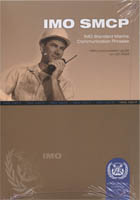제품상세보기
Nautical Publications

As navigational and safety communications from ship-to-shore and vice versa, from ship-to-ship, and on board ship must be precise, simple and unambiguous so as to avoid confusion and error, there is a need to standardize the language used. This is of particular importance in the light of the increasing number of internationally trading vessels with crews speaking many different languages, since problems of communication may cause misunderstandings leading to dangers to the vessel, the people on board and the environment.
In 1973, the Maritime Safety Committee agreed, at its twenty-seventh session, that where language difficulties arise a common language should be used for navigational purposes, and that language should be English. In consequence the Standard Marine Navigational Vocabulary (SMNV) was developed, adopted in 1977 and amended in 1985.
In 1992, the Maritime Safety Committee, at its sixtieth session, instructed the Sub-Committee on Safety of Navigation to develop a more comprehensive standardized safety language than SMNV 1985, taking into account the changing conditions in modern seafaring and covering all major safety-related verbal communications.
At its sixty-eighth session in 1997, the Maritime Safety Committee adopted the Draft IMO Standard Marine Communication Phrases (SMCP) developed by the Sub-Committee on Safety of Navigation. The draft IMO SMCP, following international trials, was amended at the forty-sixth session of this Sub-Committee, and was given final consideration by the Maritime Safety Committee at its seventy-fourth session in the light of remarks received by the Organization. The IMO SMCP was adopted by the Assembly in November 2001 as resolution A.918(22).
Under the International Convention on Standards of Training, Certification and Watchkeeping for Seafarers, 1978, as revised 1995, the ability to use and understand the IMO SMCP is required for the certification of officers in charge of a navigational watch on ships of 500 gross tonnage of more.




